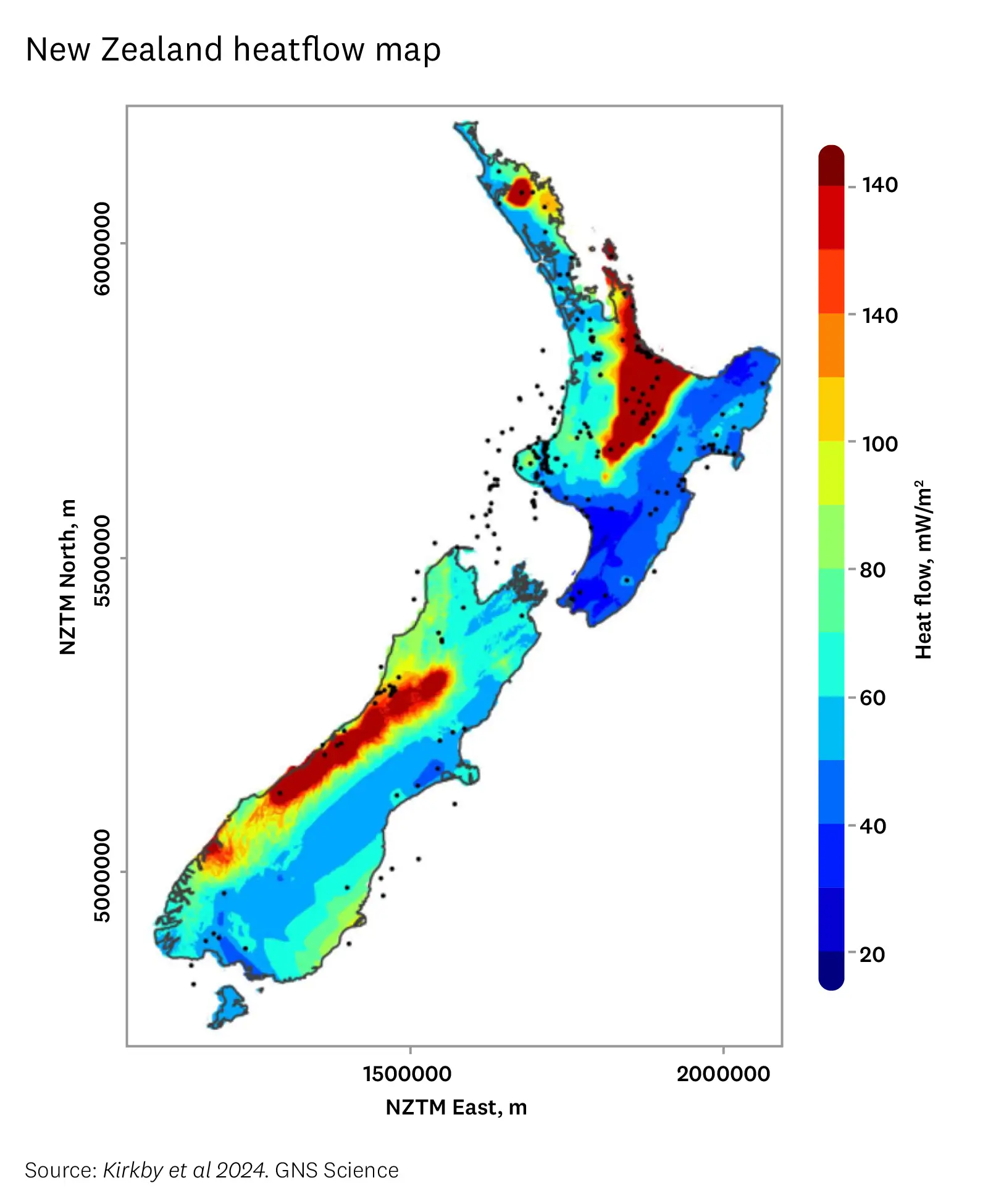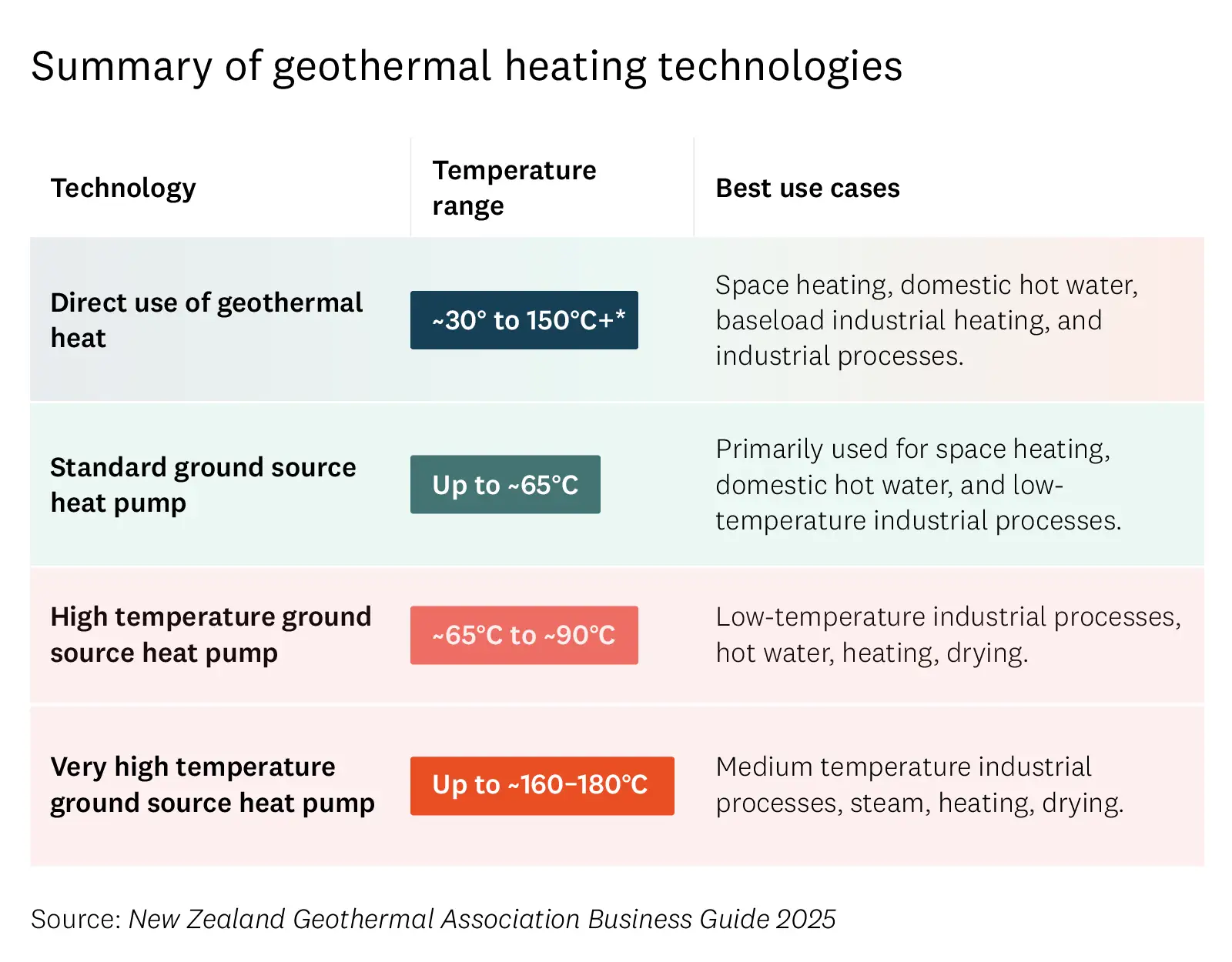Geothermal heat provides consistent, continuous energy that is independent of weather conditions and enhances energy security by using local, renewable resources.
The Geoheat business guide in Aotearoa New Zealand provides businesses with practical guidance on adopting geoheat — the direct use of geothermal energy for heating and cooling. Explore the key insights below, and download the full guide to get detailed, step-by-step advice for adopting geoheat in your business.
About this guide
The Geoheat business guide highlights New Zealand’s geothermal resources and the technology options available. These range from direct use of geothermal fluid for process heat to advanced ground source and high-temperature industrial heat pumps, which can supply up to 200–280 °C.
The report covers the full development process, from feasibility studies to installation and maintenance. It also provides an overview of regulatory and consent requirements under the Resource Management Act (RMA), and includes case studies showing proven applications that have cut energy costs and improved operational efficiency.
This guide has been developed by New Zealand Geothermal Association in collaboration with GeoExchange NZ and Traverse Environmental, with support from EECA, as a practical resource to help businesses understand if a geoheat solution could potentially apply to their situation. Geothermal heat technology is one of several renewable energy options available to New Zealand businesses. The guide focuses on geothermal heat technology and does not evaluate alternative renewable energy solutions.
Organisations are encouraged to undertake a robust feasibility assessment or options analysis to identify the most suitable technology for their specific operational needs and geographic location.
Key insights
Geoheat is available nationwide, not just in traditional geothermal areas.
Low- and medium-temperature geothermal resources exist across New Zealand, including ambient groundwater (10–18°C) suitable for heat pump systems.
Traditional high-temperature zones like Taupō and Rotorua are only part of the opportunity; fault zones, remnant volcanism, and standard geothermal gradients extend geoheat’s potential nationwide.

Proven technologies can meet a wide range of temperature needs.
Direct-use systems are viable where geothermal water temperatures match heating demand (30–150°C), while heat pumps can upgrade lower-temperature resources for heating and cooling.
Industrial heat pumps now reach 200–280°C, enabling applications that traditionally required fossil fuels, such as steam generation for food processing and drying.

Business cases show operational cost savings and reliability gains.
Case studies demonstrate measurable operational cost reductions, improved efficiency, and reliable heat supply.
- Miraka Dairy (Taupō) — uses geothermal steam for process heating, reducing emissions by 92% compared to coal-fired systems while providing stable, renewable heat.
- Nature’s Flame (Taupō) — uses 18 MW of geothermal heat to dry waste wood for pellet production, eliminating the need to burn its own product.
- Essity (Kawerau) — invested $20 million to replace natural gas drying with 100% geothermal steam on a major paper machine, improving energy resilience.
- Christchurch Airport — uses 13–14°C groundwater with heat pumps for efficient building heating and cooling.
Geoheat delivers a stable, continuous energy supply.
Unlike solar or wind, Geoheat provides a round-the-clock, weather-independent heat source, critical for industries with baseload heating needs.
This reliability reduces exposure to energy supply volatility and peak electricity demand charges.
Read next
-
Geothermal energy in New Zealand
New Zealand has an abundant supply of geothermal energy because we are located on the boundary between two tectonic plates.
-
Essity's groundbreaking geothermal project a world first
Essity's Kawerau site plans to re-build the first tissue machine, running a fully geothermal steam drying process.
- Co-funding
- Innovation
-
Bay of Plenty Regional Energy Transition Accelerator
Taking a region-wide approach to addressing the barriers and opportunities faced by medium to large energy users and renewable fuel suppliers.
- Process heat
- Decarbonisation
- Fossil fuel


